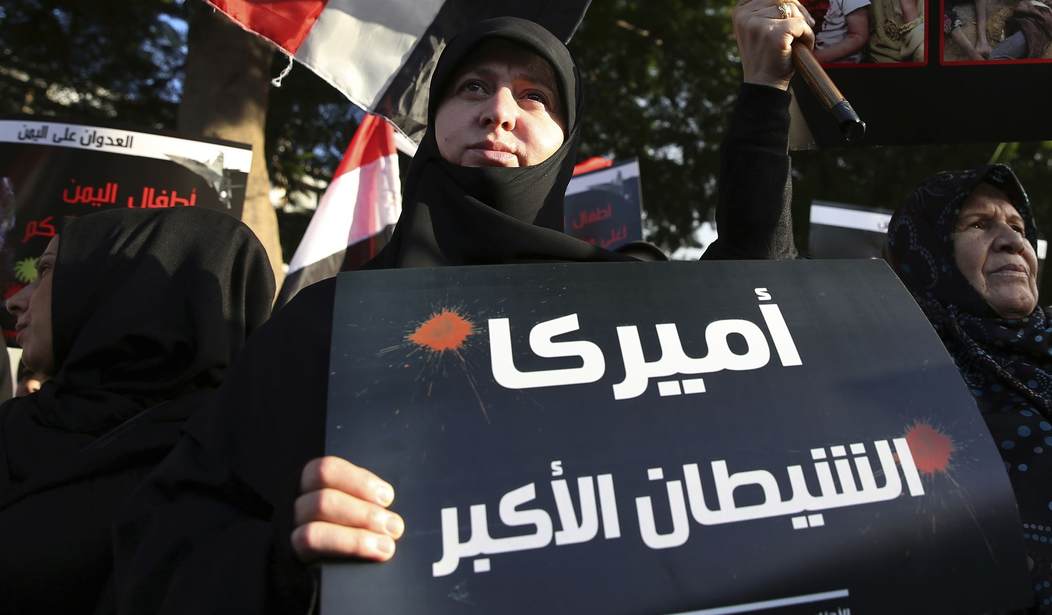Over the weekend, I was once again asking whether or not we had a plan to shut down the Houthi rebels in Yemen and protect shipping in that region. For well over a month, the Iranian-backed terrorists have been hurling drones, rockets, and ballistic missiles at commercial shipping vessels and even American warships without any sign of a counterstrike by the United States. Last night, Defense Secretary Lloyd Austin finally stepped forward and announced a new operation to address the matter… sort of. It’s called Operation Prosperity Guardian, which sounds rather impressive, and it involves multiple countries working in cooperation. But a closer look at the details reveals that the proposal leaves much to be desired. (Associated Press)
The U.S. and a host of other nations are creating a new force to protect ships transiting the Red Sea that have come under attack by drones and ballistic missiles fired from Houthi-controlled areas of Yemen, Defense Secretary Lloyd Austin announced early Tuesday in Bahrain.
The seriousness of the attacks, several of which have damaged the vessels, has led multiple shipping companies to order their ships to hold in place and not enter the Bab el-Mandeb Strait until the security situation can be addressed.
“This is an international challenge that demands collective action,” Defense Secretary Lloyd Austin said in statement released just after midnight in Bahrain. “Therefore today I am announcing the establishment of Operation Prosperity Guardian, an important new multinational security initiative.”
This plan is impressively international in nature, at least at first glance. Britain, Bahrain, Canada, France, Italy, Netherlands, Norway, Seychelles, and Spain will all take part in various roles. They will reportedly be joined by assets from other nations that did not wish to initially be named publicly. Ships and aerial resources will be more fully deployed in both the Red Sea and the Gulf of Aden.
But what is it that they will really be doing with all of those resources? From the sound of it, these are interception missions. They will be attempting to shoot down the Houthi’s drones and rockets, just as we’ve already been doing. There will just be more forces out there deploying those sorts of countermeasures.
Most of you with any degree of common sense can see what’s missing from this plan. If you have cockroaches in your kitchen, you can break out the flyswatters and try to kill every one of them you see, but the roaches will simply keep coming. You have to go to the source and poison them to put an end to the problem. Simply swatting down all of the Houthis’ drones and missiles will not be a solution as long as Iran continues to resupply them with those arms.
In my post from this weekend (linked above) I already set forth a plan that could actually be effective. We have to attack this scourge at the source. As the AP article above casually notes near the bottom, “the U.S. has not struck back at the Iranian-backed Houthis operating in Yemen or targeted any of the militants’ weapons or other sites.” That much is obvious and we already know the reason. Joe Biden is afraid of angering Iran.
The Houthis don’t have an “army.” They are not a military force or a government. They are a group of terrorists with an endless supply of weapons thanks to the generosity of the world’s largest state sponsor of terrorism. We can locate their launching locations and drop some bunkerbusters on them. If we kill enough of them, they will get the message and the drones and rockets will stop flying. We have the tools and we have the technology. What we’re lacking is the will and resolution of a Commander in Chief who is willing to do the job and not be frightened to “annoy” Iran in the process.









Join the conversation as a VIP Member